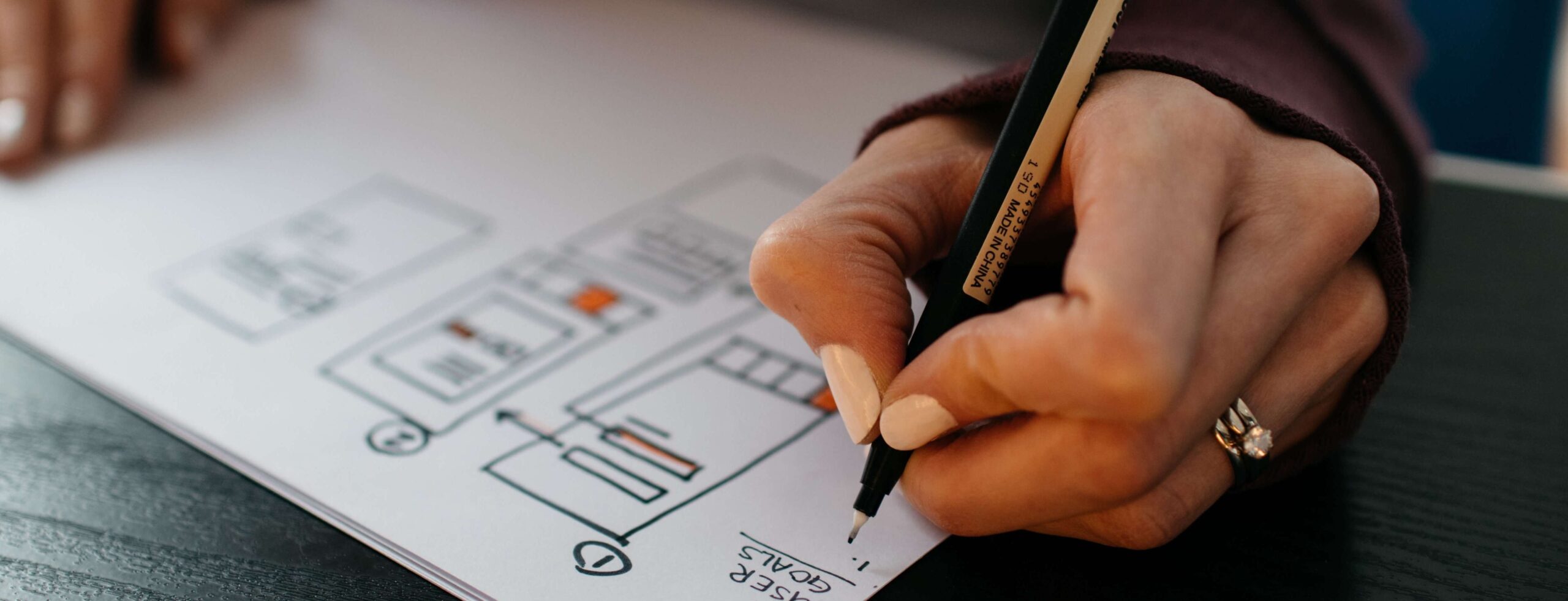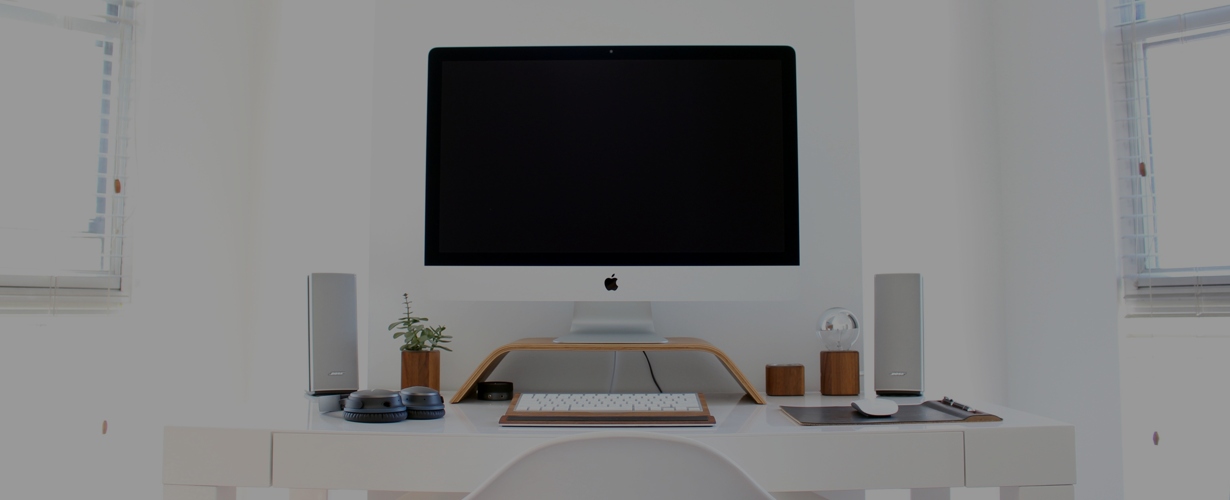Marketing was kind of a dirty word to me. As a UXer, I’m concerned with the needs of the user and providing a seamless experience- not producing glossy ads and click-bait. All that changed, however, when I accepted my current position. Suddenly I found myself creating marketing oriented pages, completely immersed in the depths of another dimension of UX design. This side’s concern is often overlooked by UXers : the business value.
I joined an agile team responsible for publishing the content for the company’s website. Like most business sites, the main purpose is to convert prospects into customers. We work at separate desks that are lumped together like an island. I work with many stakeholders and teams from different disciplines. The adjustment was pretty abrupt, but in a few months I implemented a lot of new concepts. The specifics of what this transition meant for me professionally aren’t completely clear, but I know that it’s best to be well rounded so you’re ready for any problem thrown at you.
Like many other UX designers, I entered the field of UX design with an eclectic background. I had prior experience designing ads for a regional lifestyle magazine near my hometown, then taught special-needs and pre-school classes for a little while. I later studied front end web development, then iOS development. While attending a code bootcamp, I quickly noticed that I was one of only a few students who understood how to make applications run seamlessly while looking great.
A week after graduation I was successfully designing for native mobile apps professionally. My first contract job as a UX designer focused on utilitarian apps that connected to activity trackers. Technically, they were also lifestyle apps (in the sense that they reflected the style and content from their respective brands). The codebase was the same, though mobile components may be styled differently. Features in these apps helped users to accomplish tasks such as tracking steps for the day and setting notifications. The focus on ease of use made it a UX designer’s dream. I was fast and furious- designing wireframes and interfaces with ease. Though the job was awesome, the needs of my family prompted me to begin to look for something more permanent.
The rest of this article will cover the major concepts I picked up at my first permanent position, including the distinction of marketing sites from other types of products, insights on making these types of designs successful, and keys to collaborating with different teams to achieve results.
Navigating the product pivot
Knowing what type of problem you’re solving for gives you clarity on your user stories and product requirements. Utilitarian apps make customers’ lives better- whether that’s keeping track of an amount of events, setting reminders for important events, or delivering some other functionality. Smooth interactions and logical processes are a utilitarian app’s bread and butter. Conversely, marketing sites have very different goals. The purpose of company websites (usually) revolve around customer conversion, sharing news and generally acting as “the face” of the company. For these sites, creating a good first impression to prospective customers is top priority, especially in an age when potential customers are known to open several tabs at once to compare competitors before buying in. Aside from the flagship site, there also may be several distinctive marketing pages within the greater website that seek to convert a specific segment of users into customers with sign ups. This contributes to the top of the sales funnel of that particular business segment. Most of these sign ups are for a recurring relationship with the company rather than a one-time transaction. This can include a weekly email, a membership, or a specific product or service. Though marketing and utilitarian apps have different use cases, the first step of the design process is still research- and when it comes to marketing there is a deep well to draw from.
The UX of brand identity
Though the internet is a great resource, there’s nothing like good old paperback books. The first book I read on the topic of marketing was an insightful book called Brand Thinking by Debbie Millman. In the book, she interviews many prominent designers from big companies to small design agencies and academia. Their ideas and opinions about the modern definition of branding are fascinating and funny. When I presented some of the highlights to my team they seized the opportunity to banter about different brands that everyone knows and loves. Industry leaders like Nike, Air BnB and Starbucks have legendary stories to tell around their brand identities that range the gamut from their logo design to the thoughtful nature of retail spaces.
A brand’s platform is another important consideration. This is also known as the holistic feeling of the brand collectively created by all it’s touchpoints. In addition to brand thinking, I gave a presentation on the importance of being channel agnostic to the UX team. Channel agnosticism means that the user’s experience is not tied to one specific channel (mobile or web for instance). Instead, the user journey is cohesive among all digital platforms. This was especially relevant to us as we had just helped to create a new design language system for the digital face of our company. This new system also supported our new brand positioning around financial wellbeing.
Working with different teams
Divisions of strategy, design, content and development aren’t always that clear. These disparate groups also have conflicting interests and, at times, solutions. For example, I am new to creating copy. In my last position, I was usually provided copy by the brand and could add it into the design without much thought. Now, I usually am the one to create the content. After it’s written, it’s discussed and refined further by a variety of teams. Usually, our agency will finesse the final copy to fit with the design that then in turn receives approval from several teams. Working with our in-house marketing team as well as our design agency sometimes feels like “herding cats,” but I’ve developed a sense of how to handle issues as they arise. Sometimes you need to push back when things are moving in a bad direction, while at other times you need other perspectives to weigh in order for the design to move forward. Collaborating with our agency is fascinating, because they have a long history with the company. They work from a different city, but make their way to San Antonio for weekly meetings. Our in-house marketing department also attends these weekly meetings. Other relevant representatives from different parts of the business such as compliance attends as well. The intention behind joining forces is for marketing intent to couple with content strategy, with the UX Designer representing the needs of the user. The larger idea is that with all three of these elements combined, magic is created.
Though I worked within this group, I also maintained ties with the UX practice. I met with our Principal UX designer who has a lot of experience with promotional emails and adjusting sales pages to create the perfect content to convert customers, increasing sales. She used tools like Hotjar for mobile apps to ensure they were highlighting things customers actually care about. This method creates an illuminated path for customers to find exactly what they’re looking for, and using this as a guide helps make the app feel much more intuitive.
In a large company it can be difficult to maintain a smooth design process. I’ve had executives veto design decisions after they had already been developed. When a brand is changing their marketing strategy, it can be tough to navigate between the former brand position and the new brand position. If their established customer base represents a specific demographic, content aimed at that demographic is likely vastly different than content targeted at an emerging customer base. In this scenario many things become complicated- such as stock photography. Finding the right imagery is tricky as it involves looking for attributes like facial expression, lighting, regional depictions, and many other considerations. You can spend hours scouring through stock photography repositories without finding something that fits the copy in the right way while also speaking to the established and emerging customer base.
As a UX designer, testing is still very important. Our team’s goal is to user test every piece of digital work that goes out the door. When stakeholders to a product have their own ideas about a product, test results can be hard to action from. Though I always advocate for the user, I’ve learned you have to pick your battles because you will not win them all. For me, success is reached when the design helps to meet the goals of the business in a tangible way while still being as usable as possible. Google analytics can also help you track many things that are important to the bottom line. Some of these include forms submitted as well as users signing up. These supporting data points can help you make a case for implementing usability features. Understanding user experience principles is a great foundation, but being successful in a team takes the ability to pick up a new product and seeing it through from birth to completion.
Taking the leap
For a for-profit business, the main goal of almost everyone is to make the company money. As designers our work is only as good as its impact to the business. Learning about marketing is a great way to gain exposure to that way of thinking as it involves psychological insights and business strategy. You get to understand marketing terms from COI (centers of influence) to ROI (return on investment). You get to think about how the experience fits with other channels, such as the email that directs to the webpage. With marketing sites, you can easily tell how many customers are being converted as a result of your design work. Converting users into customers is a substantial business problem that requires UX to advocate for the user as important design decisions get made.
No matter what type of product you’re assigned to, I encourage you to learn all you can and refine your skills as you go. You’ll be a stronger designer for it!



